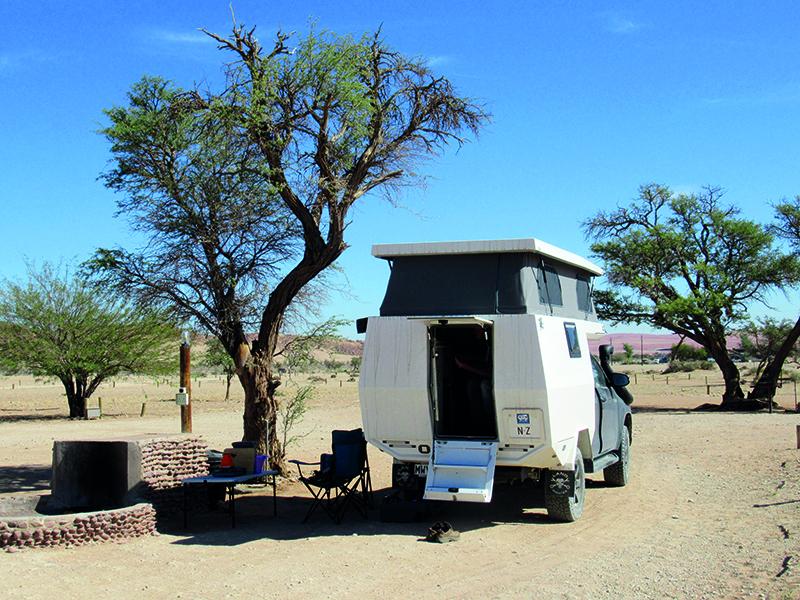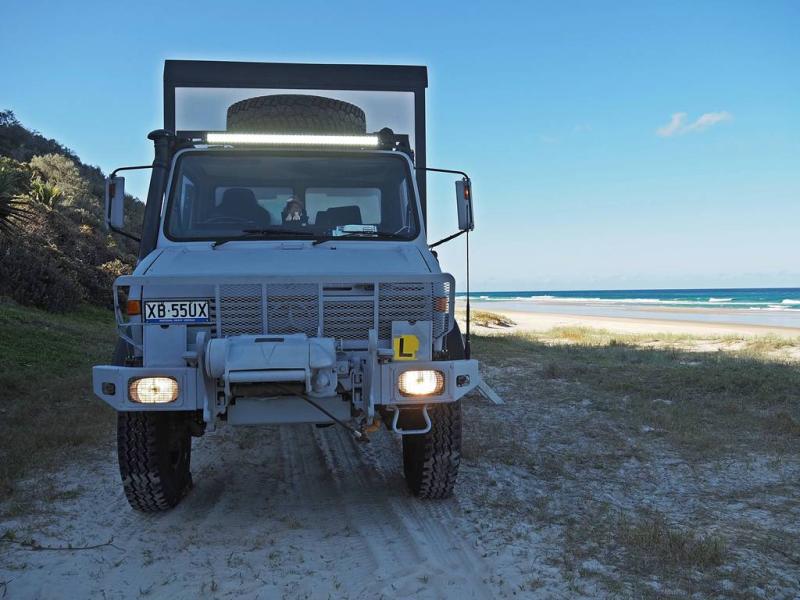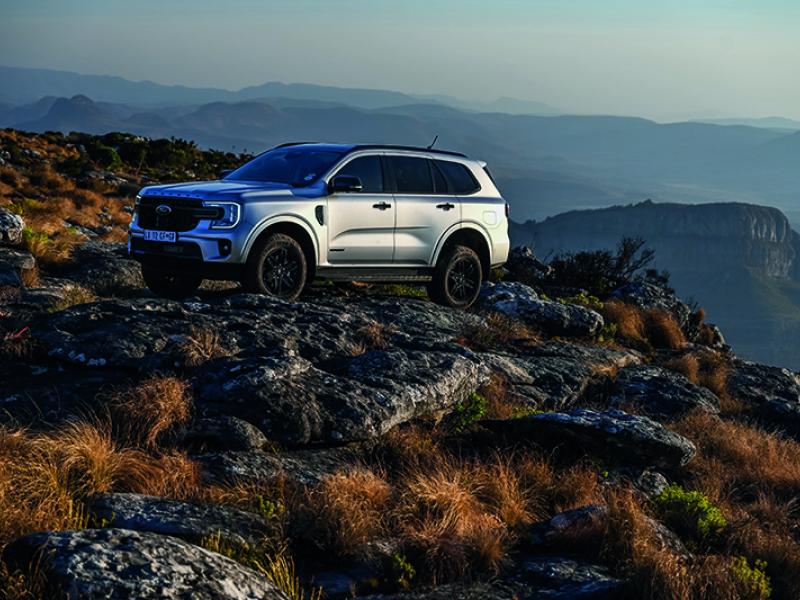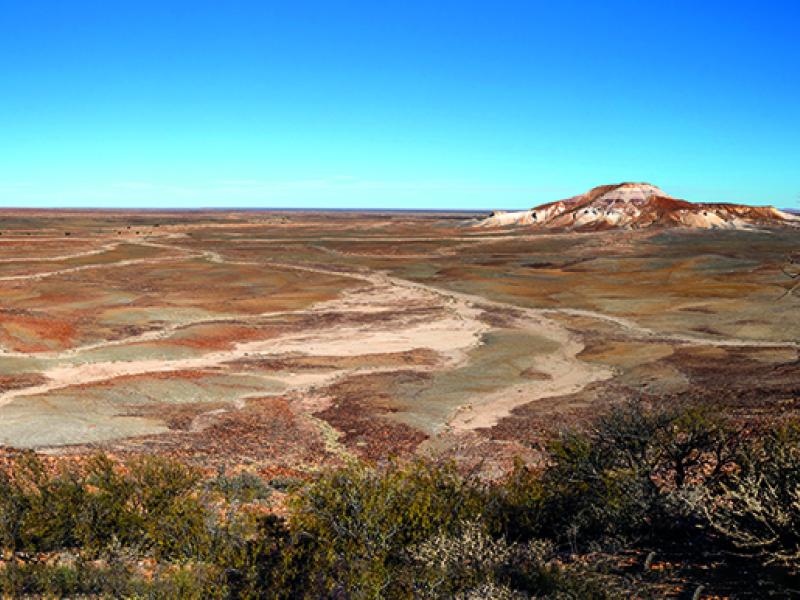For us there was just something unknown about Africa, too scary, too big, too complicated, too hot, and so it was left undiscovered until we started to ‘run out of road’.
In 2019 we planned to buy a car in South Africa and travel around Africa for no fixed time or travel route other than to respect the wet and dry seasons. However, this was 2019 and Covid-19 put a halt to the trek.
Locked down in New Zealand, and with the perfect camper design in my head from years of travel around the world, we decided to instead build one and ship it to Africa when the world opened up again.
In theory, building a camper should have been a simple exercise, but getting the concept of what we wanted over to a fabricator’s way of thinking was not easy, as the idea of overlanding was not really well understood in New Zealand.
Frustrated to the point of almost giving up we chanced upon a company in Whangarei that listened, questioned, and thought about it. It was this attitude that gave us confidence to proceed to the design stage. The initial design rendered in 3D was exactly what we were looking for.
The build started mid-2021, we took delivery in early 2022 and then spent the next year finishing it off.
Travel in Africa tends to revolve around the wet and dry seasons. To complicate things, some areas have two wet and dry seasons. Our only real plan was to ship to South Africa, and May was calculated to be the ideal time to arrive. Again, shipping should have been easy, but Covid-19 had left a legacy of backlogs around the world and finding a shipping agent proved to be a difficult task. It became clear that from the beginning Roll-On-Roll-Off (RORO ) was out of the question with the waitlist stretching out into mid-2024 for the Asia to Africa shipping route. This left container shipping as the only option, quoted at around $NZ16,000 – more than double the price from two years previously. It was time to rethink things.
Again, frustrated to the point of reneging on Africa, we were about to commit to travelling to Australia instead, when by chance we were put in touch with a family from Dunedin who also wanted to get their car to South Africa. Effectively this almost halved the shipping costs by sharing a 40’ container. Africa was back on and we arrived in Cape Town one day after our car in late May 2023. It was three years late but now we had the perfect overland camper that we named Frankie.
South Africa
After a couple of days getting our bearings just outside of Cape Town we headed south to Cape Agulhas, Africa’s most southern land point in cold, wet and blustery weather with the plan to travel along the Garden Route east-bound. However, with the weather showing no signs of improvement and with winter definitely entrenched, we instead headed west along the coast to the Cape of Good Hope. It is a stunning coastal road mostly dismissed by South Africans and left off travel brochures presumably in favour of more African Safari imagery. In Cape Town we brushed up on the more complicated parts of apartheid and its legacy on a walking tour, followed by a scenic trip up Table Mountain. Our goal now was to quickly head north for warmer weather.
Namibia
Overlanding poses constant challenges; where to go, why go there, and how to get there.
This may sound surprising but it is deceptively hard to co-ordinate road conditions, park times, park fees, accommodation, food, fuel, payment methods, weather, and more pressingly, affordability. However, it is certainly worth the effort.
First up in Namibia was Fish River Canyon, then after a good look around we headed north-east and out to Luderitz on the southern Namibia coast. Next was the Namib Desert with the spectacular Sossusvlei and Dune 45.
By now the hundreds of kilometres of corrugated dirt roads had become the norm, along with deep sand, low ratio 4WD and deflated tyres; this was more than compensated by the vast, empty beauty of the Namibian desert.
Recalling an episode of the TV series Onedin Line where Captain James Onedin and Captain Baines are shipwrecked, the Skeleton Coast National Park was a must. It was not hard to imagine the tragedies that have occurred along this stretch of isolated coast. Inland, Palmwag was next and its stunning concession where we felt truly alone, driving the dry river beds with the occasional elephant and giraffe. This was followed by an opportunity to learn more about the resident Himba people in and around the Epupa Falls on the Angolan border, a green oasis after the endless sand and dirt.
Planning ahead, we realised that the Botswana game parks were going to be too expensive on our budget, so we changed our route to instead drive along the Caprivi Strip, only transiting the top of Botswana to get to Zambia, where our first stop was Livingstone and the Victoria Falls.
Zambia, West Tanzania, Burundi, Rwanda, Uganda
Sitting at camp in Livingstone with the summer and wet season approaching, we decided to head north as fast as possible to best use the seasons in our favour. The question then became, how far north? Mount Kilimanjaro was our original northern goal but the fastest way there was through the Serengeti as we wanted to drop by Lake Tanganyika. While the Serengeti was expensive, the Masai Mara park in Kenya that borders it to the north was a third of the cost, so it now became our northern destination. To get there we added in Northern Zambia, Western Tanzania, Burundi, Rwanda, and Uganda which gave us a real, raw and horrific lesson in local history, as well as memorable walks with wild chimpanzees and an up front and personal encounter with gorillas in the aptly named Bwindi Impenetrable Forest.
We also saw the little known Ssese Islands in the north west of Lake Victoria and then onto the source of the Nile in northern Lake Victoria.
Kenya
The Masai Mara National Reserve consolidates all the visions most of us have of Africa. It is effortlessly picturesque, however it is the Amboseli National Park with its iconic backdrop of Mt. Kilimanjaro set against thousands of animals, that takes away any lingering doubt that you are in the real and utterly spectacular Africa. Finally the Indian Ocean, Mombasa, Lomu Island and the start of it being “too hot”.
Tanzania/Malawi
From Kenya we drove down into Tanzania, dropping off at the rustic but nexpectedly authentic city of Bagamoyo with its sad slave history and hectic fishing markets before arriving at Dar Es Salaam. We added in exotic but heavily touristed Zanzibar before heading inland to Malawi. Before Malawi, Mbeya at 1800m, offered a cool reprieve from the stifling heat and humidity of the Tanzanian coast – one which Malawi was soon to subject us to, with a vengeance. Malawi with its proudly independent people and its easy-going landscape and namesake lake was thankfully mostly devoid of frantic safari-based tourism giving us a rare opportunity to interact with the local way of life.
Time to wrap it up
South Luangwa National Park in Eastern Zambia finished off our dry season safari circuit with startling wildlife and ominous thunderclouds gathering to the north east. We now headed west to get back to Lusaka where we had arranged to leave Frankie until March 2024 while we flew home to New Zealand to catch up with family and friends for Christmas.
Next, we hope top do Zimbabwe, Mozambique and finishing off the Garden Coast in South Africa then we will ship Frankie to Fremantle. Well, that’s the current plan.
Information
Facebook Group: OverlandingAfrica.
Travel Information: www.ioverlander.com.
Roads: Tracks4Africa.
Online Navigation: Google.
Offline Navigation: maps.me, gurumaps, Google (limited offline).
Shipping NZ: Aquaair Freight Services (www.aquaair.co.nz).
Shipping SA: African Overlanders (www.africanoverlanders.com).
Car Documents: Carnet De Passage (AA NZ).
Design/Fabricator: Land Pirates (www.landpirates.co.nz).







